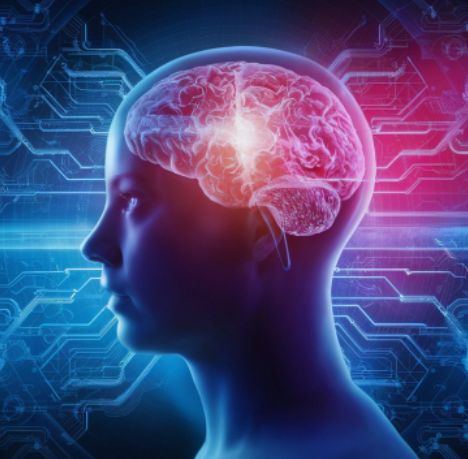Recent advancements in brain-computer interface (BCI) technology have enabled a patient with amyotrophic lateral sclerosis (ALS) to communicate.
Researchers developed an intracortical speech neuroprosthesis which is a device that decodes brain activity associated with attempted speech, transforming it into text displayed on a screen. The system allowed the patient, who had severe speech impairment due to ALS, to communicate effectively using a vast vocabulary.
Brain-computer interface
The brain is an incredibly complex organ, responsible for everything from basic motor functions to higher-order tasks like speech. In individuals with conditions like ALS, which affects approximately five out of every 100,000 people worldwide, the brain’s ability to send signals to muscles progressively deteriorates. ALS is characterised by the degeneration of motor neurons, leading to muscle weakness, paralysis, and eventually, difficulty speaking, swallowing, and breathing. The loss of speech is particularly devastating as it isolates patients, diminishing their ability to interact with others and significantly reducing their quality of life.
A brain-computer interface is a technology that enables direct communication between the brain and an external device, bypassing the usual pathways of nerves and muscles. BCIs have the potential to restore communication for people with paralysis by decoding brain signals associated with speech or movement. The research, published in The New England Journal of Medicine, signifies a major advancement, offering a new way for individuals with severe speech impairments to regain their voice.
The study
The study involved a 45-year-old man with ALS who had experienced significant deterioration in his ability to speak. Five years after his initial diagnosis, the patient underwent surgery to implant four microelectrode arrays into the left ventral precentral gyrus, a brain region associated with speech production. These arrays recorded neural activity from 256 intracortical electrodes, capturing the brain’s signals as the patient attempted to speak.
On the first day of use, 25 days after the surgery, the neuroprosthesis achieved 99.6% accuracy using a 50-word vocabulary. Remarkably, within two days, and after only 1.4 additional hours of system training, the vocabulary was expanded to 125,000 words, achieving 90.2% accuracy. Over the next eight months, the patient used the system in self-paced conversations for over 248 hours, maintaining an average accuracy of 97.5% and communicating at a rate of approximately 32 words per minute.
Technology that made it possible
The success of this BCI relies on advanced neurotechnology and machine learning algorithms. The microelectrode arrays implanted in the patient’s brain recorded neural activity, which was then processed by a signal-processing system. This system decoded the signals into phonemes – the building blocks of words – which were then assembled into coherent text using sophisticated language models.
The system was designed to adapt and improve over time. Data from multiple sessions were combined to continuously calibrate the decoder, allowing the neuroprosthesis to become more accurate as more training data were gathered. The technology also included text-to-speech software, enabling the decoded text to be vocalised, with the speech pattern closely mimicking the patient’s voice before ALS onset.
This research highlights the potential of BCIs to drastically improve the quality of life for individuals with neurodegenerative diseases, particularly those with severe speech impairments. As this technology continues to evolve, it could offer a lifeline to many who have lost their ability to communicate, providing them with a voice once again.
Original article source:
FAQ
- What is a Brain-Computer Interface (BCI)?
A BCI is a technology that allows for direct communication between the brain and an external device, such as a computer. BCIs interpret brain signals and translate them into commands that can control devices or communicate messages.
- How does a BCI restore speech in ALS patients?
In ALS patients, the motor neurons controlling muscles, including those required for speech, are affected. A BCI can decode the patient’s brain signals associated with speech or intention to communicate and convert these signals into synthetic speech or text, enabling the patient to communicate.
- How does the BCI interpret brain signals for speech?
BCIs use sensors to detect electrical activity in specific regions of the brain involved in speech and communication. Advanced algorithms then process these signals to decode the patient’s intended words or sentences.
- What are the challenges in developing BCIs for speech restoration?
– Accuracy: Decoding complex speech patterns from brain signals is challenging.
– Latency: There can be delays between the patient’s intent and the output.
– Adaptation: The BCI system needs to adapt to the individual brain patterns of each patient.
– Invasiveness: Some BCIs require surgical implantation, posing medical risks.
- Are BCIs for speech restoration invasive or non-invasive?
Both invasive and non-invasive BCIs exist. Invasive BCIs involve implanting electrodes in the brain, offering more accurate signal detection. Non-invasive BCIs use external sensors, which are safer but less precise.
- What kind of improvements have BCIs brought to ALS patients?
BCIs have allowed ALS patients to regain the ability to communicate with family, caregivers, and medical professionals. Some BCIs have enabled patients to produce sentences in real-time, improving their quality of life significantly.
- How fast can a BCI translate brain signals into speech?
The speed of translation varies depending on the system used. Some advanced BCIs can generate sentences at a rate of around 15-20 words per minute, although this is still slower than natural speech.
